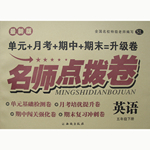题目内容
【题目】Surprising uses for lemons
Lemons are tasty and healthy, but they are simply so much more than for making lemonade. 【1】
◇Lemons are used to refresh and clean a cutting board.
With garlic and onions being used widely in cooking, the struggle of washing the unpleasant smell out of a cutting board is something many people can relate to. But not only that, the cutting board can be home to all sorts of harmful bacteria.
【2】 Cut one in half and press the fruit against the board, wipe hard until the juices flow over the board, wash and enjoy your lemon-fresh cutting board.
◇Lemons are used to unclog a drain(疏通排水管).
First, several lemons are squeezed for their juices into a cup, then the drain is washed with boiling water before being filled with half a box of baking soda(苏打). Lemon juice is poured over the baking soda, causing it to bubble. 【3】
◇Another part of your kitchen you can clean with lemons is your microwave.
Putting some lemon juice into a cup of water and microwaving for 5 minutes not only loosens up stains in the microwave so they are easily wiped away, but leaves a fresh smell behind.
◇【4】
If you are lucky enough to have a dishwasher in your house, you can freshen things up by putting a few lemon slices into your dishwasher.
◇Lemons can be used to create a homemade face scrub(磨砂膏).
First, you need three tablespoons of olive oil, the juice of a lemon, two tablespoons of honey and half a cup of sugar.【5】 After the time is up, wash to brighten your skin.
A.Luckily, life has brought us lemons.
B.After 15 minutes, water flows smoothly.
C.Here are some different uses for the fruit.
D.Then combine, apply and leave on the face for 15 minutes.
E.Lemons can get rid of unpleasant smells in the kitchen.
F.Lemons can be put into your dishwasher to freshen things up.
G.Cut a lemon and squeeze it over the rubbish before throwing it away.
【答案】
【1】C
【2】A
【3】B
【4】F
【5】D
【解析】
本文是说明文。文章介绍了柠檬的几种用途。
【1】
根据下文介绍的几种柠檬的用途可知,C项“这里介绍柠檬的几种不同用途”符合语境说明了本文的写作目的。故选C。
【2】
结合本空前面的the struggle of washing the unpleasant smell out of a cutting board the cutting board can be home to all sorts of harmful bacteria和本空后面介绍的用柠檬清洗砧板的方法可知,A项“幸好,我们还有柠檬”符合语境,在文中起承上启下的作用。故选A。
【3】
根据本空前面的unclog a drain, boiling water可以锁定B项中的water flows smoothly。代入后,“15分钟后,排水管便通畅了”符合语境。故选B。
【4】
根据本空后面的freshen things up by putting a few lemon slices into your dishwasher可以锁定F项。代入后,“在洗碗机内放入柠檬可以把厨具洗得很洁净”符合语境。故选F。
【5】
根据本空前面的First和本空后面的the time is up可以锁定D项中的Then和15 minutes。代入后,“然后混合搅拌,敷在脸上等待15分钟”符合语境。故选D。

 名师点拨卷系列答案
名师点拨卷系列答案【题目】请认真阅读下列短文, 并根据所读内容在文章后表格中的空格里填入一个最恰当的单 词。注意:每个空格只填1个单词。请将答案写在答题纸上相应题号的横线上。
What makes us laugh?
Why do we laugh? Well it’s funny you should ask, but this question is a very interesting one to investigate. For what at first seems like a simple question turns out to require a surprisingly complex answer –– one that takes us on a journey into the very heart of trying to understand human nature.
Most people would guess that we laugh because something is funny. But if you watch when people actually laugh, you’ll find this isn’t the case. Laughter expert Robert Provine spent hours recording real conversations at shopping malls, classrooms, offices and cocktail parties, and he found that most laughter did not follow what looked like jokes. People laughed at the end of normal sentences, in response to unfunny comments or questions such as “Look, it’s Andre”, or “Are you sure?”. Even attempts at humor that provoked laughter didn’t sound that funny.
So if we want to understand laughter, perhaps we need to go deeper, and look at what is going on in the brain. The areas that control laughing lie deep in the sub cortex(下皮层), and in terms of evolutionary development these parts of the brain are ancient, responsible for primal(原始) behaviors such as breathing and basic reflexes(反射). This means laughter control mechanisms are located a long way away from brain regions that developed later and control higher functions such as language or even memory.
Perhaps this explains why it is so hard to control a laugh, even if we know it is inappropriate. Once a laugh is started deep within our brains these “higher function” brain regions have trouble interfering. And the opposite is true, of course. It is difficult to laugh on demand. If you consciously make yourself laugh it will not sound like the real thing – at least initially.
But this does not fully answer the original question. To answer this, perhaps we need to look outwards, to look at the social factors at play when people laugh. Provine’s study suggests that it isn’t just some independent process that happens to us while we are talking to someone. He also found that laughter was most common in situations of emotional warmth and so-called “in-groupness”.
Perhaps “transmission” is another most important feature of laughter. Just listening to someone laugh is funny. You can even catch laughter from yourself. Start with a forced laugh and if you keep it up you will soon find yourself laughing for real.
What these observations show is that laughter is both fundamentally social, and rooted deep within our brains, part and parcel of ancient brain structures. All these things are true. And biologists say each time we get closer to an answer for a fundamental question, it deepens our appreciation of the challenge remaining to answer the others. And there is a long way to go.
What makes us laugh? | ||
Introduction | Studying laugh is closely 【1】to understanding human nature. | |
【2】 | ●The popular 【3】is not true that we laugh because something is funny. ●The study of real conversations reveals that laughter didn’t 【4】 follow funny comments. | |
Causes | Inside | ● Ancient areas 【5】for primal behaviors control laughing. ● “Higher function” regions can’t 【6】with laughing. |
【7】 | ● Situations of emotional warmth and in-groupness give 【8】to laughing. ●Laughter can be 【9】, which is another most important feature. | |
Conclusion | The origin of laugh is associated with both brain structures and 【10】factors. | |